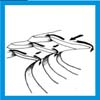From TKWB - Traditional Knowledge World Bank
Jump to navigation
Jump to search
| LOCAL APPLICATION OF THE TECHNIQUE |
 |
| Technique: |
SUNKEN DAMS |
| Local name: |
Wadi Mzab |
| Site: |
Wadi Mzab |
|
Location

Click the globe to see the techinique on Google Map
|
Continent: Africa
Country: Algeria
Site: Wadi Mzab
Coordinates:
Lat:
32.46
Long:
3.71 |
Description of the local variant of the technique
The water supply systems of the Pentapolis settled in the wadi Mzab are based largely on catchment systems, diversion and control of occasional floods that fill the bed of the watercourse which is normally dry. Among these systems are part of the underground dams that, as in other areas of the Sahara, act primarily as defensive barriers against the violent flash floods and at the same time as barriers for the maintenance of soil water, a resource on which to draw when the immediate effects of the floods are fewer. Therefore they do not serve to create reservoirs in the open, but help maintain the flow in the subsurface, where they can then be drawn using wells like the ones shown in the picture.
Survival prospects
60% Preserved and functional
Images



The water reserves held by the underground part of the dam allow you to draw water from the various wells, traditionally drawn by animals, which are located in the catchment area of the flood. The dam of Beni Isguen is about 400 meters long. In times of full (see photo), very rare, the sudden large amount in excess of the basin is distributed to the palm grove (downstream of the dam) by major roads and creeks and, when the flow decreases, from water inlets and channels that depart from the dam itself.
Deepening
|
TRADITIONAL TECHNIQUE DATA
| Author: |
|
| Other authors: |
|
| Reference: |
|
|
|